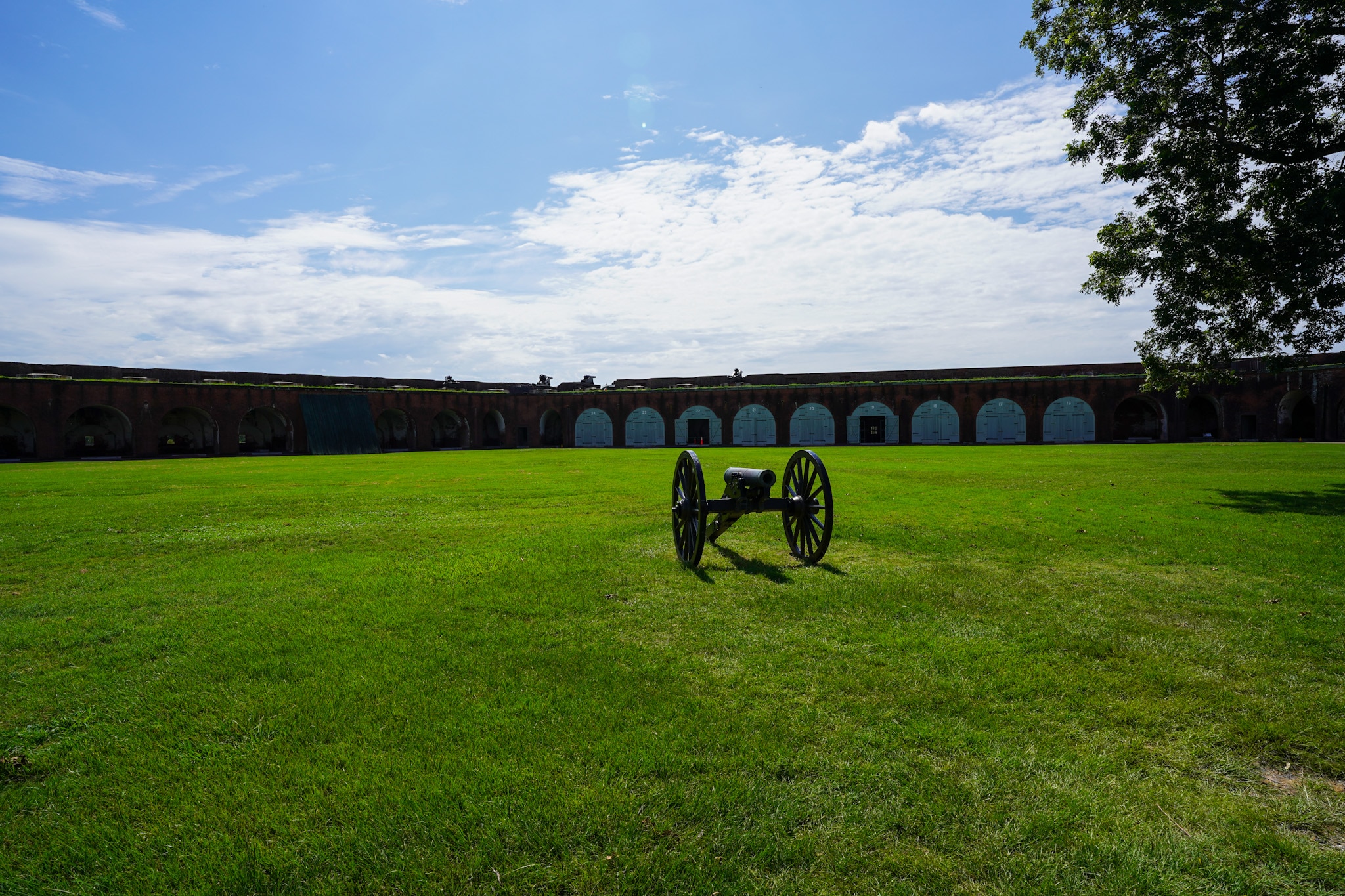“One might as well bombard the Rocky Mountains as Fort Pulaski.”
Robert E. Lee
For much of the 19th century, brick and masonry fortifications are impenetrable. All this would change with the innovation of rifling technology. Forts once believed to be invincible are now conquerable with a strategic bombardment. Thus, coastal defenses such as Fort Pulaski become obsolete.
Disclosure: Some links on our site are affiliate links. If you purchase a linked item, we will make a commission, at no extra charge to you.
Fort Pulaski Facts
- It took 18 years to construct Fort Pulaski.
- Approximately 25 million bricks compose the fort. Many from nearby Savannah, but some shipped in from Maryland and Virginia. Granite and sandstone blocks are from New York and Connecticut.
- Fort Pulaski’s moat averages 7 to 8 feet deep.
- The walls tower 22 feet high inside the fort and 32 feet high outside.
- The walls average between 5 to 11 feet thick of solid brick.
- The only battle at the fort occurred April 10th-11th, 1862. Union forces positioned on Tybee Island attack Confederate troops inside.
- Union General David Hunter issued General Order No. 7, freeing area slaves. This predates Lincoln’s Emancipation Proclamation.
- Fort Pulaski was a final destination on the Underground Railroad.
Built between 1829 and 1847, the fort is part of the “third system” of fortifications for the United States. System classification combines two things. Time periods of fund allocation for their construction. And the advancements included in their design.
“First system” forts come about starting in 1794. Shortly after the United States gains independence. These consist of low walled structures with earthworks protecting wood or brick walls. The belief is the soft earth will cushion the effect of cannon fire. And the low walls present a smaller profile for projectiles. Angled perimeter walls resemble a star. This prevents enemy forces from massing along the bottom. Thus, avoiding the vertical field of fire. The angles allow defenders on any wall to see and fire on adjacent walls. Additionally, the angles reduce the chance of destructive straight-on hits from cannonballs. First system forts are small, and with some exceptions, mount only one tier of cannon on the fort’s roof.
“Second system” forts begin in 1807. President Jefferson has concerns over a possible war with Great Britain. This causes him to renew the fortification program. A common weakness among the “first system” is exposure to enemy fire. New artillery designed to explode in midair rains shrapnel down onto defenders. Additionally, the angled walls and gun emplacements are vulnerable. A solid shot running parallel to it can take out many guns and personnel in one shot. Construction of fortified casemates protect the forts gunners from this danger. Openings in the wall allow for firing.
Stacking these fortified casemates creates higher walls. This places more cannon along shorter lengths. One advantage is more fire directed at a passing ship in a shorter amount of time. Vital for coastal defense. Masonry replaces wood and earth as the primary building material. Both allow several levels of casemates able to withstand incoming cannon fire.
Following the War of 1812, Congress appropriates $800,000 for a new coastal defense system. This is the “third system”. The main defensive works are large structures. Many guns dot tall, thick masonry walls. Layers of low, protected masonry walls surround the main structure. These absorb the attackers energies and exhaust the enemy. This design combines elements of both the “first” and “second” systems. They work together for a more powerful whole.
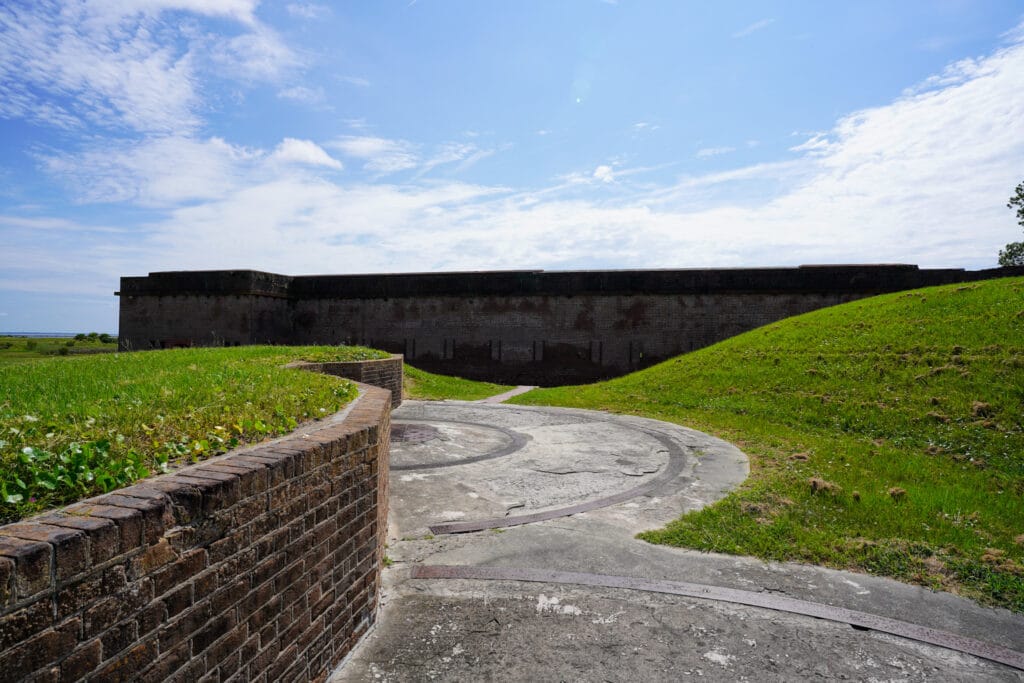
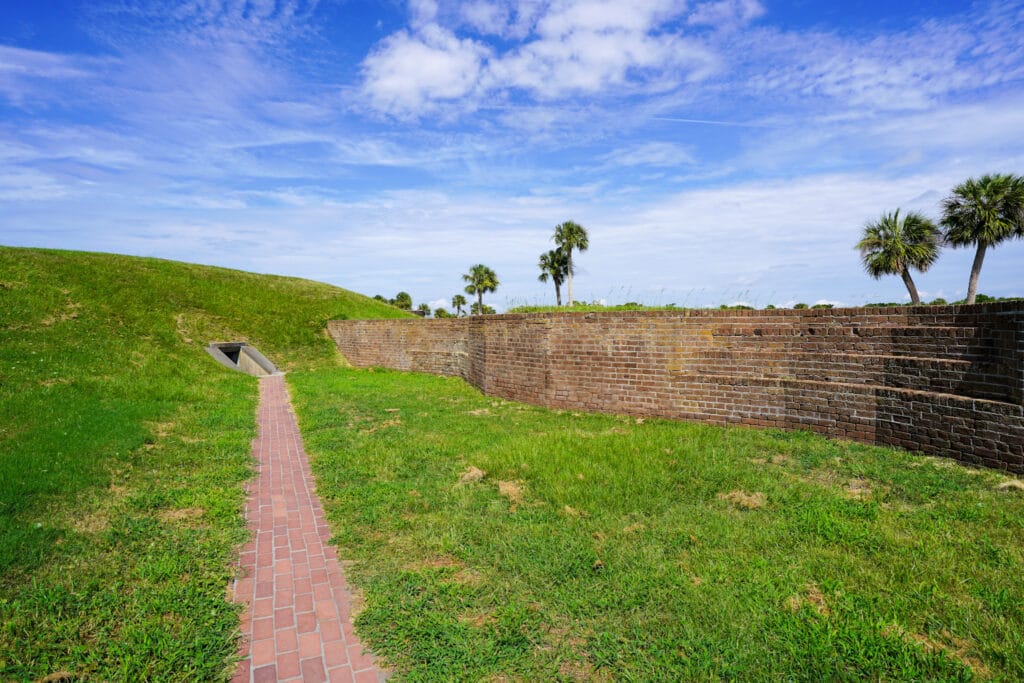
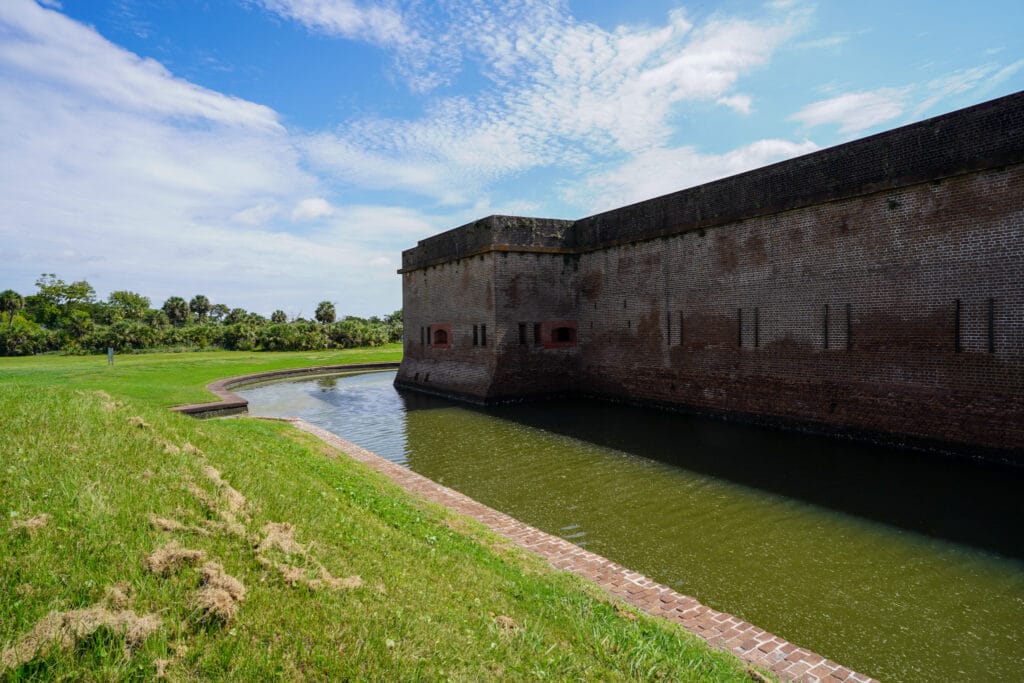

Upon graduation from West Point, a young Lieutenant Robert E. Lee reports to Fort Pulaski. His task is draining excess water from Cockspur Island. He accomplishes this with a series of canals and earthworks. This is crucial to provide an adequate foundation for the fort. With the excess water drained, construction begins. The soft, muddy earth still cannot support the weight of the proposed 25 million brick fort. To solve this, workers drive seventy-foot long pilings into the mud. Atop these, they lay two layers of timber subfloor. This subfloor provides direct support for the brickwork.
The walls average between 5 and 11 feet thick of solid brick. This gives confidence the fort is impenetrable. Only the largest land-based artillery at the time can breach it. The smooth bore cannon in use has a range of approximately half-a-mile. Tybee Island, the nearest land, is much further away than that. It is from Tybee Island that Union forces bombard Fort Pulaski with a new technology. Rifled projectiles.
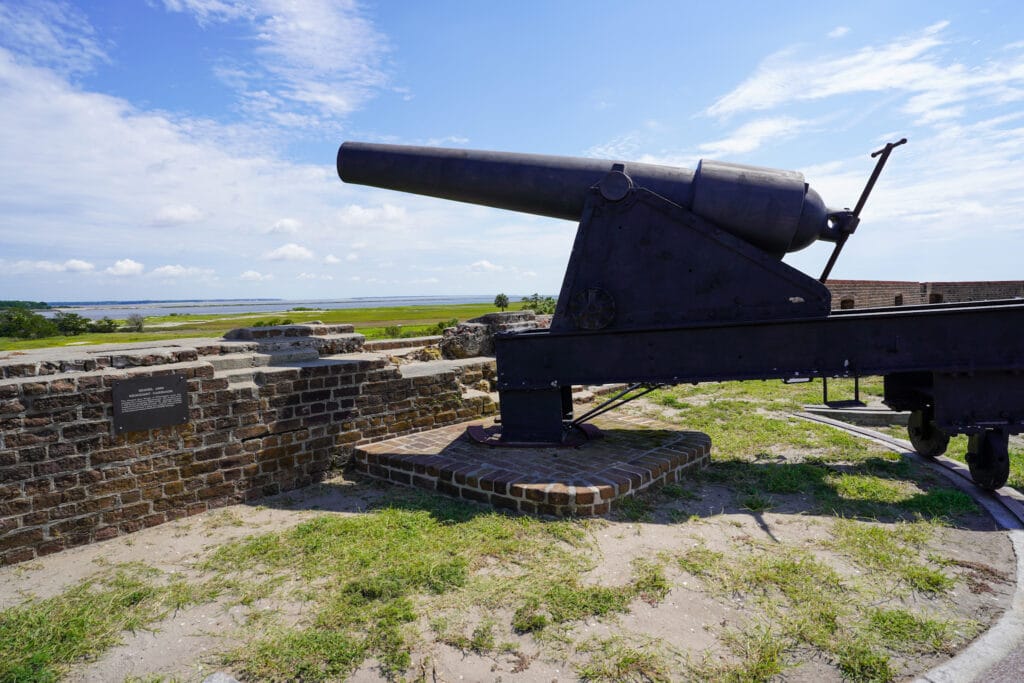
In 1860, South Carolina secedes from the Union, setting in motion the Civil War. Georgia Governor Joseph E. Brown orders Fort Pulaski taken by his state. 110 men travel down river from Savannah and seize the fort. Georgia secedes in February, 1861, and joins the Confederacy. Following Georgia’s secession, Confederate troops move into the fort. By December, the thought is Tybee Island is too isolated and unprepared for conflict. Confederate forces choose to abandon the island. This allows Union forces to gain a foothold across the Savannah River. Engineer Captain Quincy A. Gillmore’s Union forces begin constructing batteries along the beaches.
On the morning of April 10th, 1862, Union forces ask for the surrender of the fort. This is to prevent needless loss of life. Confederate Colonel Charles H. Olmstead refuses. Using the new James Rifled Cannon and Parrott Rifles, the long bombardment begins. Developed by Charles T. James and Robert Parker Parrott, these guns are unique in that they are “rifled”. “Rifling” a gun barrel consists of cutting a helical pattern of grooves into the bore wall. This creates raised areas in the barrel called “lands”. These make contact with and exert torque on the projectile as it moves down the barrel. Torque is a rotational force equal to linear force. This contact induces spin which adds stability. These rifled projectiles are more accurate than larger and heavier smoothbore cannonballs. Their range increases from one-half mile to upwards of five miles.
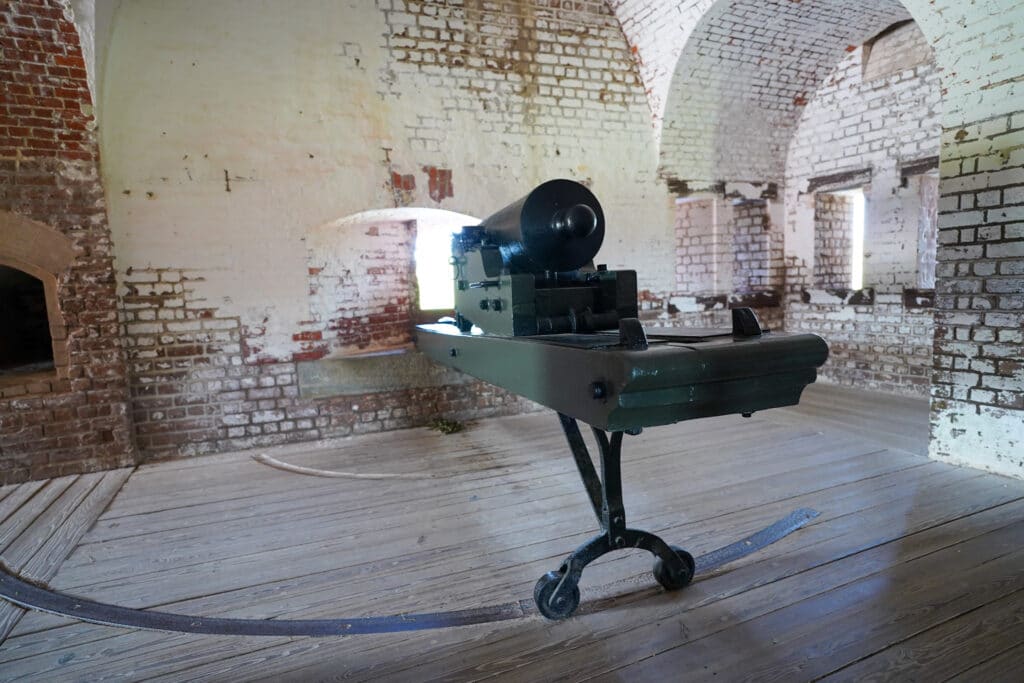

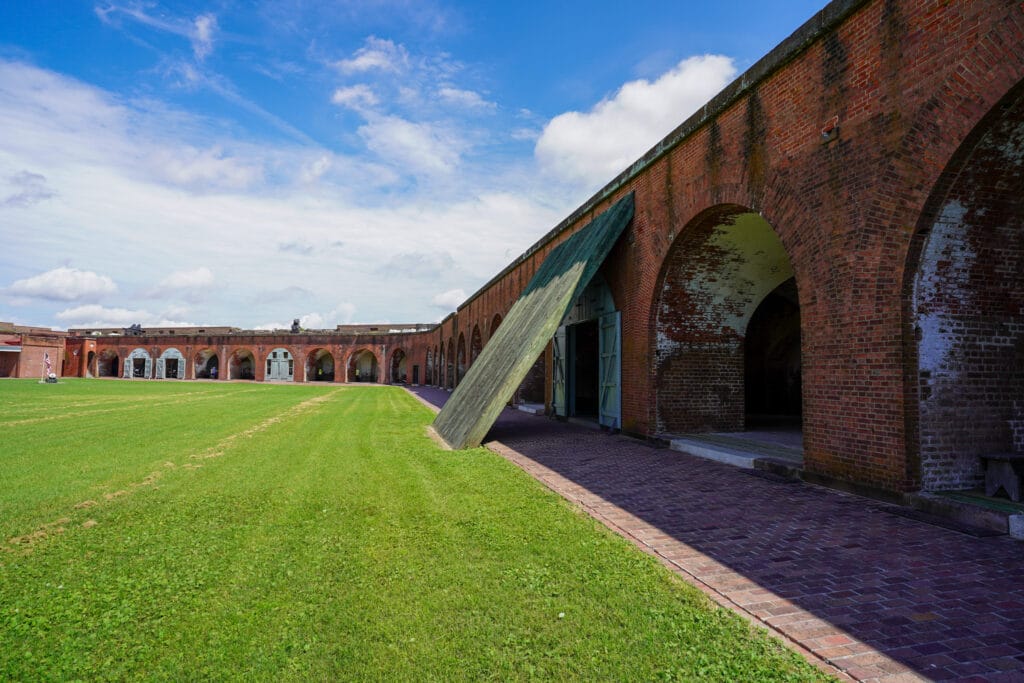
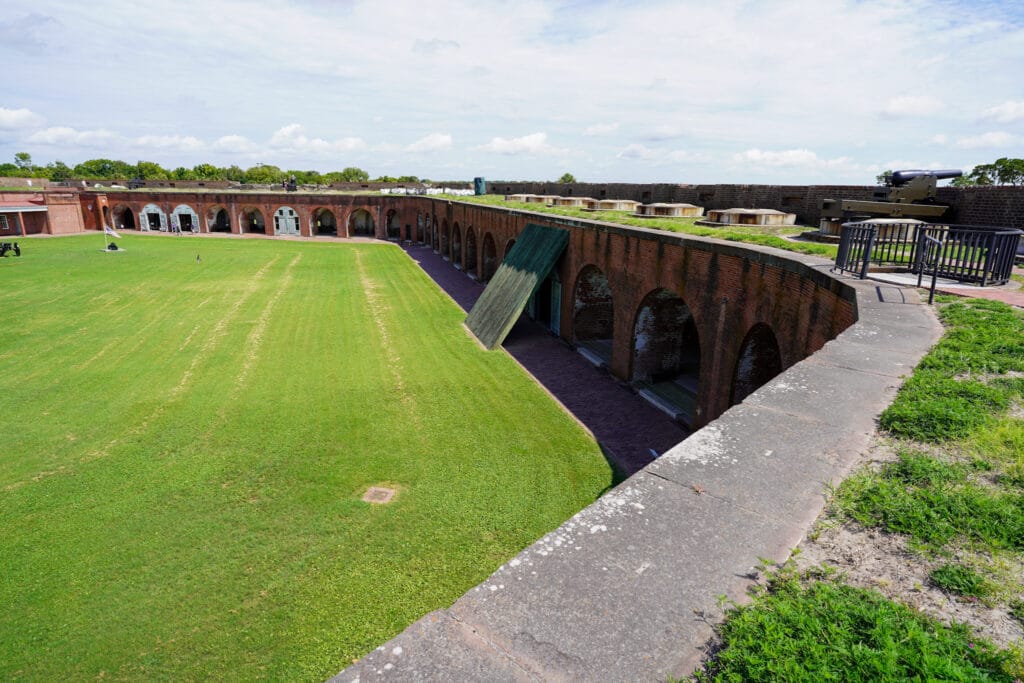
Within 30 hours, the accurate fire breaches one of the corner walls. Shells pass through close to the main powder magazine, threatening an explosion. Colonel Olmstead surrenders, although this decision haunts him for decades. Only two soldiers, one Union and one Confederate, sustain injuries in the attack.
“We were absolutely isolated beyond any possibility of help from the Confederate authorities, and I did not feel warranted in exposing the garrison to the hazard of the blowing up of our main magazine – a danger which had just been proved well within the limits of probability…There are times when a soldier must hold his position to the last extremity, which means extermination, but this was not one of them…That the fort could and would be absolutely destroyed by the force of the enemy was a demonstrated fact…while our own power to harm them had been reduced to a minimum…I am still convinced that there was nothing else that could be done.”
Colonel Olmstead
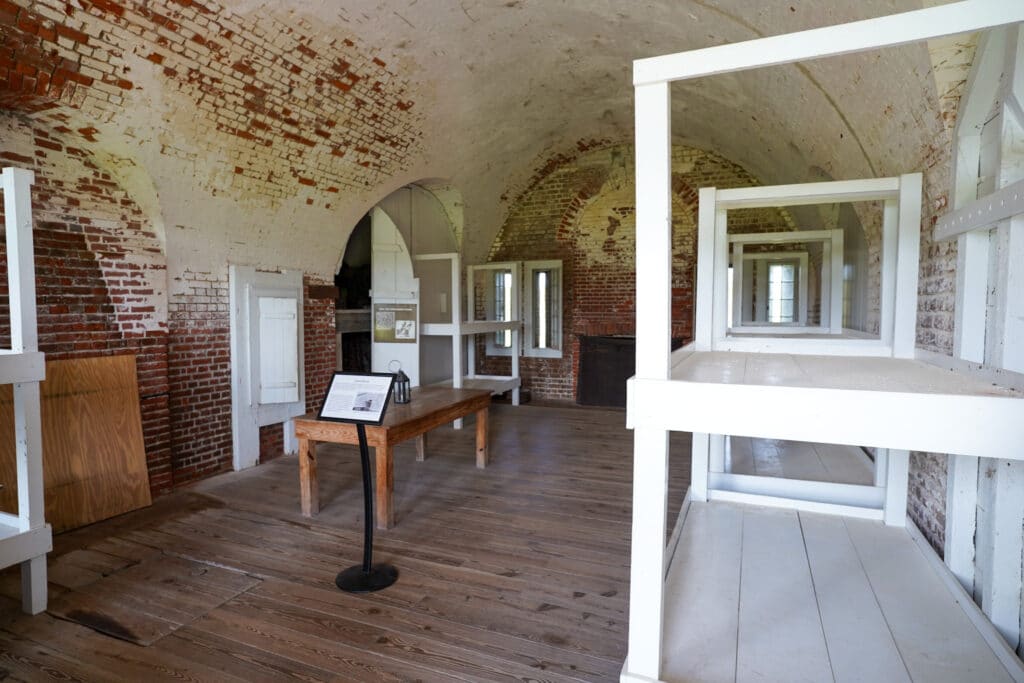
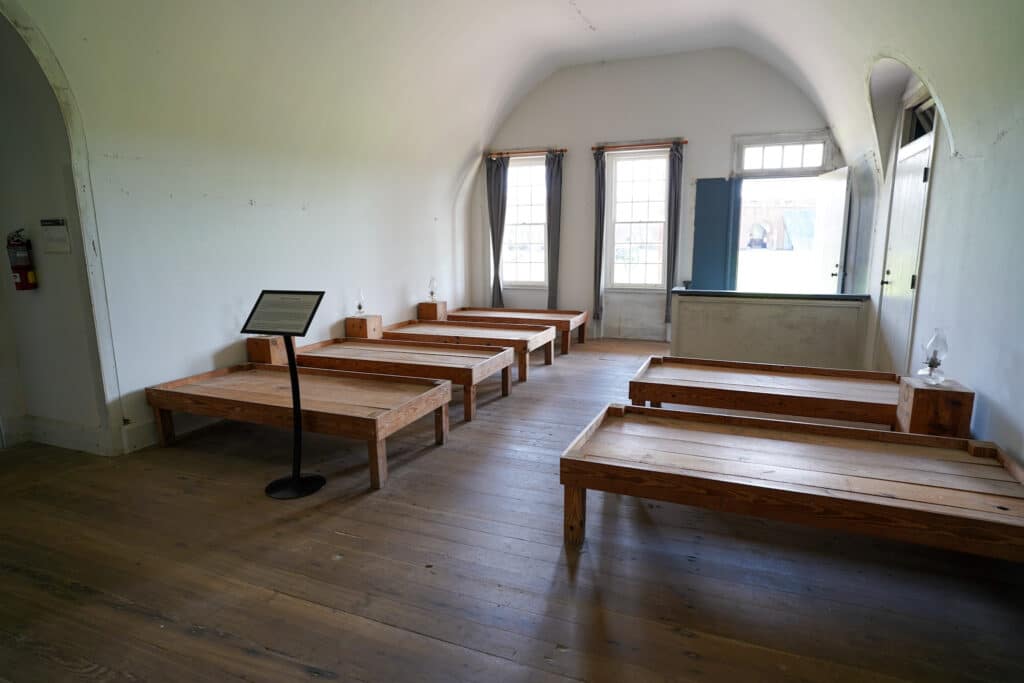


Within six weeks, Union forces repair the fort and all shipping in and out of Savannah ceases. The loss of this port cripples the Confederate war effort. Shortly after gaining control, Major General David Hunter issues General Order No. 7. This frees those held as slaves in Georgia, Florida, and South Carolina. President Lincoln rescinds this order. This is to prevent slave-holding Unionists from supporting the Confederacy. Despite his concerns, the national mood is moving against slavery. Especially in the Army. A few months later, Lincoln issues his own Emancipation Proclamation. Fort Pulaski becomes a final stop on the Underground Railroad. Slaves throughout the area are free upon arrival to Cockspur Island.
Late in the war, the fort serves as a military prison for Confederate prisoners. Also, as a political prison. Political prisoners include the Confederate Secretary of State. The Secretary of the Treasury. The Secretary of War, and Assistant Secretary of War. As well as three State Governors, and a Senator. Additionally, the men who commanded the fort while held by Confederate forces.
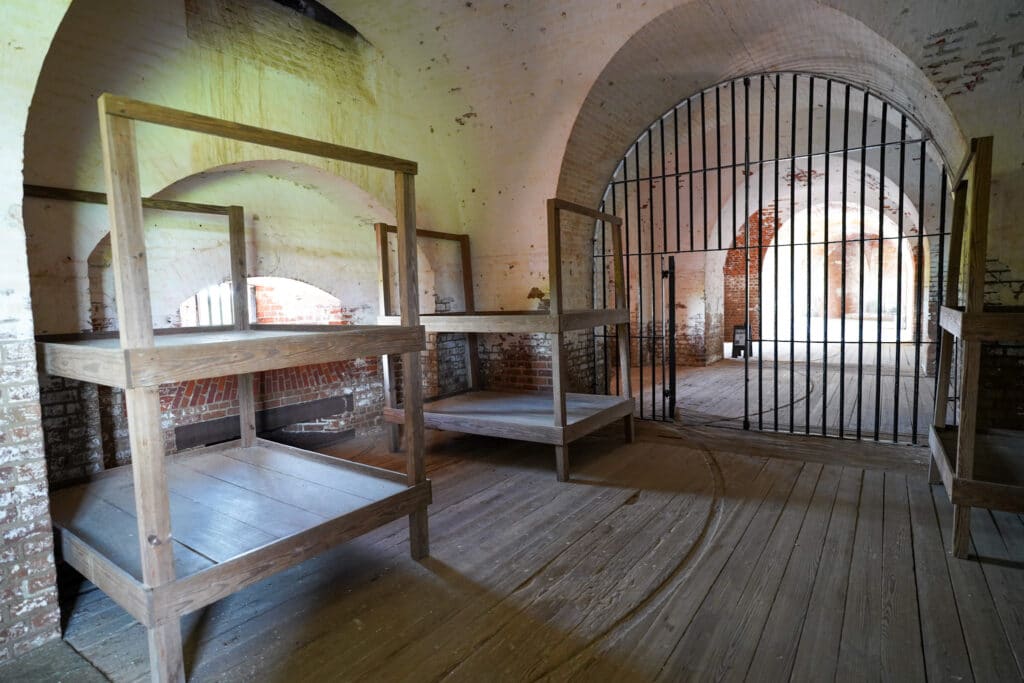
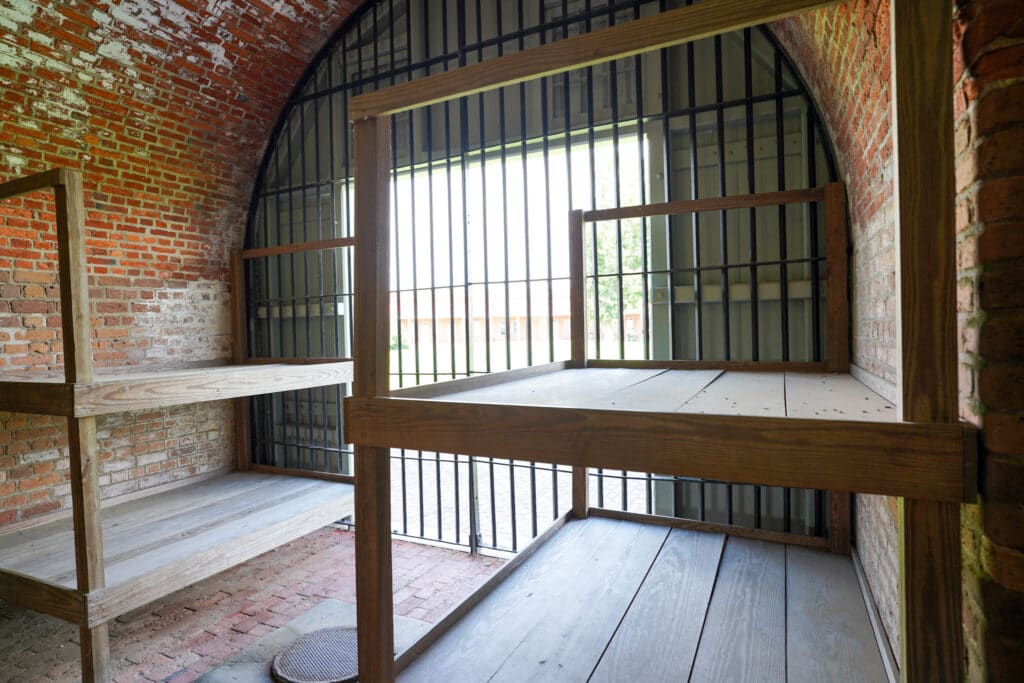
By the turn of the 20th Century, the fort falls into disrepair. In effort to save the fort, the War Department declares it a National Monument on October 15, 1924. The monument transfers to the National Park Service on August 10th, 1933. Shortly thereafter, the Civilian Conservation Corps arrives and begins rehabilitation of the fort. It is open to the public for a short time before the start of World War II, when it serves as a section base for the US Navy. After the war, control reverts back to the Park Service. On October 15th, 1966, it’s listed on the National Register of Historical Places.
GETTING TO FORT PULASKI
From Savannah’s Historic Riverfront, head East on E Bay St towards Upper Factors Walk. Use the left two lanes to turn left onto E President St. After approximately 5 miles, keep left to follow signs for US-80 E. A little over 7 miles, you will turn left onto Fort Pulaski Rd.
TIPS FOR YOUR VISIT
- Wear comfortable closed-toed shoes. There is a lot of walking and many tripping hazards both inside and outside the fort.
- I would suggest insect repellant. While it isn’t the worst for insects, they were still pretty bad.
- Allow yourself at least one hour for your visit. Longer, depending on how involved you get into the signage and tours.
- Bring your own water. Also, there are very few areas to escape the heat, so preparation is key.

